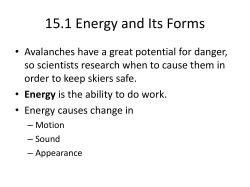
Solution
PC3232 Nuclear & Particle Physics AY09/10 Exam Solutions 1 The answer for certain questions in this document is incomplete. Would you like to help us complete it? If yes, Please send your suggested answers to nus.physoc@gmail.com. nus.physoc@gmail.com Thanks! ☺ Question 1 (a) Photoelectric effect Compton scattering Pair production : knocks electrons out of its shell. : scattering at photon with electrons. : reacts with nucleus to form positrons and electrons. Question 1 (b) PairPair production Pairproduction Photoelectric Absorption Compton Scattering Question 1 (c) They are not consistent with unity, as the reaction 4 → 2 has a higher count rate compared to 2 → 0 . We see that 5 → 4 is a beta decay. ∆ 1, ∆ ∆ no,, it is an allowed decay. The 4 → 2 and 2 → 0 are gamma decays: 4 → 2 , 2 6, ∆ no, ⇒ 2, 3, 4, 5, 6 2 →0 , 0 2, ∆ no, ⇒ 1, 2 As for the reason to the difference in counts, counts it is currently not in the syllabus of this module. Question 2 (a) The shell model is used due to certain observations: 1) The plot of 2-neutron 2 neutron separation energy, 2) Nuclear charge radius 3) The stable isotope counts 4) The binding energy PC3232 Nuclear & Particle Physics AY09/10 Exam Solutions 2 In all these graphs and experiments, it is observed that there are some sudden jumps or discontinuous behavior for various and number configurations. So there seems to be a hidden shell system where the and numbers are nicely arranged in the nucleus. The shell model holds 2 big assumptions: 1) A single nucleion is governed by a potential caused by other nucleons 2) Collision between nucleons that would result in energy state increase for one of them cannot happen if the final energy state is already occupied by another nucleon. The magic numbers 2,8,20,28,50 were predicted by solving the Hamiltonian for this model. It is found that only the Woods-Saxon potential reproduces these magic numbers. Question 2 (b) i) ii) iii) 0 Question 2 (c) The shell model only explains well for odd nuclei, i.e. odd-even and configurations. So it cannot explain why 0 is even. It can predict for individual elements, but it cannot explain why is that so for all nuclei. 1) 0 → 3 , 3 2) 0 → 1 , 1 3) 1 → 3 , 2, 3, 42dominant% Since the intensity ∝ power, ' ≈ ∆, the ratio of energies, - - )3%: )1%: )2% 1.6 × 10. / : 5.6 × 10. . : 7.3 × 10/ . 1: 3.58 × 101 : 1.83 × 10- Question 3 (a) Question 3 (b) Question 4 (a) Nuclear fission occurs when heavier nuclei splits into lighter nuclei. There are 2 kinds of fission, induced and spontaneous. Nuclear fusion occurs when lighter nuclei combine to form heavier nuclei. The mass of both reactions are not conserved, the difference in mass between the product and the initial nuclei is converted into energy. PC3232 Nuclear & Particle Physics AY09/10 Exam Solutions 3 Question 4 (b) 2 3 4 % + 3 .4 % − 3 -47% − 38% 17.6MeV Question 4 (c) < + < → < + < + < + <̅ Using 4-momentum notations, and assuming that the mass of antiproton equals the mass of protons, 23C + DC initiallabframe, B F <EC GinalCMframe, 43 I CJ 0 <K <K L23C + DC M − <EC 4 3C 43C + 43C DC + DC − <EC 163C 33C + 23C DC + C − <EC 163C 43C + 23C DC 163C ∴ DC 63C Solutions provided by: Bong Kok Wei (Q1a-b, 2b, 4a-b) John Soo (Q1c, 2a, 2c, 4c) © 2012, NUS Physics Society.
© Copyright 2025














